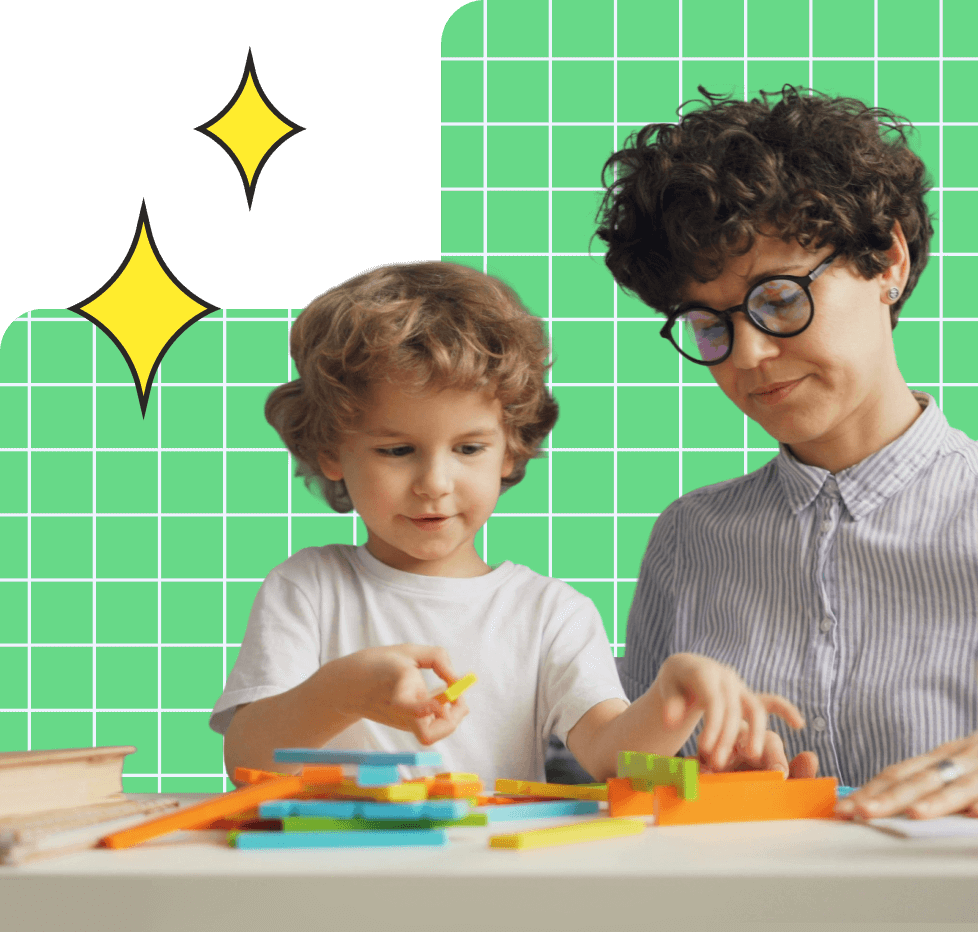Virtual Reality STEM Education: Transforming High Schools


wp:paragraph
Virtual reality (VR) is rapidly reshaping the landscape of STEM education in high schools worldwide. At UNOWA, we are committed to empowering institutions, educators, and students by integrating cutting-edge VR solutions into curriculum-aligned, inclusive, and scalable educational systems. This article explores how virtual reality STEM education is revolutionizing learning, the challenges and opportunities it presents, and proven strategies for successful implementation — especially across the EU, MENA, and CIS regions.
/wp:paragraph
wp:heading {"level":2}
The Rise of Virtual Reality in STEM Education
/wp:heading
wp:paragraph
The global VR in education market is experiencing explosive growth, valued at $14.55 billion in 2023 and projected to reach $65.55 billion by 2032, with an average annual growth rate of 18.2% (source). The demand for immersive, interactive learning is especially strong in STEM (Science, Technology, Engineering, Mathematics), where high school courses account for the largest share of the expanding K-12 STEM market.
/wp:paragraph
wp:paragraph
Why is VR so powerful in STEM? It enables students to visualize complex scientific concepts, conduct virtual experiments, and participate in simulations that would be impossible or unsafe in a traditional classroom. This hands-on, experiential approach significantly boosts engagement and comprehension.
/wp:paragraph
wp:heading {"level":2}
Empowering Inclusive and Accessible Learning
/wp:heading
wp:paragraph
At UNOWA, we believe every student deserves access to quality STEM education. VR is a game-changer for inclusivity:
/wp:paragraph
wp:list
- Bridging Gaps: VR brings laboratory experiences to students who lack access to physical labs, whether due to geographic, economic, or infrastructural barriers.
- Supporting Special Education Needs (SEN): Customizable, multisensory VR environments cater to diverse learning styles. For students with autism, ADHD, or physical disabilities, VR offers a controlled, distraction-free space to explore STEM content at their own pace (Edutopia).
- Leveling the Playing Field: By removing physical and logistical constraints, VR ensures all students — regardless of background or ability — can participate actively in STEM lessons.
/wp:list
wp:heading {"level":2}
Curriculum Alignment and Large-Scale Impact
/wp:heading
wp:paragraph
One of our core strengths at UNOWA is delivering VR content that is fully aligned with national and regional STEM curricula. This ensures that immersive experiences are not just engaging, but also meet learning objectives and standards.
/wp:paragraph
wp:list
- Tailored Content: VR modules can be adapted to local curricula, languages, and cultural contexts, making them suitable for diverse educational systems across the EU, MENA, and CIS.
- Scalability: As hardware costs decrease and content libraries expand, VR becomes increasingly accessible for large-scale implementation in schools and educational projects.
/wp:list
wp:heading {"level":2}
Overcoming Challenges in VR STEM Education
/wp:heading
wp:paragraph
While the benefits are substantial, integrating VR into high school STEM education comes with challenges:
/wp:paragraph
wp:list
- Cost and Infrastructure: Initial investment in VR hardware and software can be significant, particularly in underfunded regions. However, prices are falling, and innovative financing or public-private partnerships can help bridge the gap.
- Teacher Training: Effective use of VR requires comprehensive professional development. Teachers need support to integrate VR into their pedagogy and maximize its potential.
- Content Quality: Ensuring VR content is pedagogically sound and curriculum-aligned is critical for meaningful learning outcomes.
- Digital Divide: Reliable internet and modern devices are not yet universal, especially in parts of the MENA and CIS regions. Addressing this divide is essential for equitable access.
/wp:list
wp:heading {"level":2}
Proven Strategies for Successful Implementation
/wp:heading
wp:paragraph
Drawing on over 15 years of experience and insights from global reform projects, we recommend the following best practices:
/wp:paragraph
wp:heading {"level":3}
1. Project-Based Learning
/wp:heading
wp:paragraph
Integrate VR into project-based STEM activities to foster critical thinking, collaboration, and innovation. For example, students can work together to solve real-world engineering challenges in a virtual environment.
/wp:paragraph
wp:heading {"level":3}
2. Early Intervention
/wp:heading
wp:paragraph
Introducing VR-enhanced STEM programs in middle school helps identify and nurture talent early, closing achievement gaps and promoting equity.
/wp:paragraph
wp:heading {"level":3}
3. Strategic Partnerships
/wp:heading
wp:paragraph
Collaborate with technology providers, universities, and research institutions to accelerate content development and teacher training. For instance, the Indian Institute of Technology Delhi’s mentorship program for high school girls uses expert lectures and hands-on VR workshops to immerse students in STEM fields (IIT Delhi STEM Program).
/wp:paragraph
wp:heading {"level":3}
4. Blended Learning
/wp:heading
wp:paragraph
Combine VR with traditional teaching methods to create equitable, engaging learning environments. The "Hybrid2" project, funded by the National Center for Education Research, demonstrates how blending VR with everyday experiences can drive deeper understanding (NCER Hybrid2 Project).
/wp:paragraph
wp:heading {"level":3}
5. Continuous Monitoring and Evaluation
/wp:heading
wp:paragraph
Implement robust monitoring and evaluation frameworks to assess the effectiveness of VR interventions and ensure continuous improvement.
/wp:paragraph
wp:heading {"level":2}
Policy and Regulatory Landscape
/wp:heading
wp:heading {"level":3}
European Union
/wp:heading
wp:paragraph
The European Commission’s Digital Education Action Plan encourages the integration of emerging technologies, including VR, into school curricula. EU policies emphasize inclusivity, accessibility, and teacher training (European Commission Digital Education).
/wp:paragraph
wp:heading {"level":3}
MENA and CIS
/wp:heading
wp:paragraph
Many countries in these regions are piloting VR in education as part of broader digital transformation strategies. Government guidelines focus on infrastructure development, public-private partnerships, and curriculum modernization to support STEM and digital skills.
/wp:paragraph
wp:heading {"level":3}
SEN Support
/wp:heading
wp:paragraph
EU and some MENA countries mandate accessible learning environments, including the use of assistive technologies like VR for students with special needs.
/wp:paragraph
wp:heading {"level":2}
Real-World Impact and Recent Developments
/wp:heading
wp:list
- In May 2024, the Indian Institute of Technology Delhi launched a STEM mentorship program for high school girls, featuring VR-based workshops and hands-on problem-solving.
- In November 2024, Virginia Commonwealth University received $1.7 million to create equitable, technology-enhanced science learning spaces for marginalized students.
/wp:list
wp:paragraph
These initiatives underscore the global momentum behind virtual reality STEM education and its potential to drive equity and excellence.
/wp:paragraph
wp:heading {"level":2}
Expert Insights
/wp:heading
wp:quote
"By utilizing VR, educational institutions may develop inclusive learning environments where each student can actively participate and achieve their full potential."
/wp:quote
wp:paragraph
Professional Advice:
/wp:paragraph
wp:list
- Invest in ongoing teacher training and support.
- Prioritize curriculum-aligned, accessible, and adaptable VR content.
- Leverage partnerships for high-quality content and best practices.
- Monitor and evaluate VR interventions for scalability and impact.
/wp:list
wp:heading {"level":2}
Benefits vs. Challenges at a Glance
/wp:heading
Benefits
Challenges
Enhanced engagement and understanding
High initial costs
Supports inclusivity and SEN
Need for teacher training
Curriculum alignment and adaptability
Ensuring content quality and alignment
Scalable for large-scale implementation
Addressing the digital divide
wp:heading {"level":2}
Frequently Asked Questions (FAQ)
/wp:heading
wp:heading {"level":3}
What is virtual reality STEM education?
/wp:heading
wp:paragraph
Virtual reality STEM education uses immersive VR technology to teach science, technology, engineering, and mathematics concepts. It allows students to interact with 3D models, conduct virtual experiments, and participate in simulations that enhance understanding and engagement.
/wp:paragraph
wp:heading {"level":3}
How does VR support students with special education needs (SEN)?
/wp:heading
wp:paragraph
VR offers customizable, multisensory experiences that cater to different learning styles and needs. It provides a safe, controlled environment for students with autism, ADHD, or physical disabilities to explore STEM content at their own pace.
/wp:paragraph
wp:heading {"level":3}
Is VR content aligned with national curricula?
/wp:heading
wp:paragraph
Yes, at UNOWA, we ensure all VR content is tailored to align with national and regional STEM curricula, meeting specific learning objectives and standards.
/wp:paragraph
wp:heading {"level":3}
What are the main challenges of implementing VR in schools?
/wp:heading
wp:paragraph
The primary challenges include the initial cost of hardware and software, the need for teacher training, ensuring content quality and curriculum alignment, and addressing the digital divide in access to technology.
/wp:paragraph
wp:heading {"level":3}
How can schools get started with VR in STEM education?
/wp:heading
wp:paragraph
We recommend starting with pilot programs, investing in teacher training, and partnering with experienced providers like UNOWA. Continuous monitoring and evaluation are key to scaling up successfully.
/wp:paragraph
wp:paragraph
At UNOWA, we are at the forefront of developing innovative, inclusive, and curriculum-aligned educational solutions. Let’s work together to transform learning experiences for the better. For more information about our VR STEM education solutions, visit UNOWA.
/wp:paragraph
wp:paragraph
References:
/wp:paragraph
wp:list
- Virtual Reality in Education Market Report
- Edutopia: VR for Special Education
- IIT Delhi STEM Program
- European Commission Digital Education
- NCER Hybrid2 Project
/wp:list








